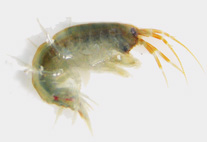Abstract
Anderson (1871a: 38) mentioned the family nomen Dicroglossidae, without any comment, in a list of specimens of the collections of the Indian Museum of Calcutta (now the Zoological Survey of India). He referred to this family a single species, Xenophrys monticola, a nomen given by Günther (1864) to a species of Megophryidae from Darjeeling and Khasi Hills (India) which has a complex nomenclatural history (Dubois 1989, 1992; Deuti et al. submitted). Dubois (1987: 57), considering that the nomen Dicroglossidae had been based on the generic nomen Dicroglossus Günther, 1860, applied it to a family group taxon, the tribe Dicroglossini, for which he proposed a diagnosis. The genus Dicroglossus had been erected by Günther (1860), 11 years before Anderson’s (1871a) paper, for the unique species Dicroglossus adolfi. Boulenger (1882: 17) stated that this specific nomen was a subjective junior synonym of Rana cyanophlyctis Schneider, 1799, and therefore Dicroglossus a subjective junior synonym of Rana Linnaeus, 1758 (Boulenger, 1882: 7). The synonymy of these two species nomina has been accepted as valid until now by all authors, and we here confirm it, having examined the symphoronts (syntypes) of Rana cyanophlyctis (ZMB 3198, adult female, SVL 50.0 mm; ZMB 3197, adult female, SVL 44.7 mm) and of Dicroglossus adolfi (BMNH 1947.2.4.60, adult female, SVL 38.6 mm; BMNH 1947.2.4.61, adult male, SVL 33.1 mm; BMNH 1947.2.25.46, adult male, SVL 39.0 mm). Dubois (1980: 158, 1981: 238) referred the species cyanophlyctis to the genus Euphlyctis Fitzinger, 1843, where is still stands nowadays (Frost et al. 2006; Joshy et al. 2009). The nomen Dicroglossini was subsequently upgraded to the rank subfamily, as Dicroglossinae (Dubois 1992: 309, 313; Roelants et al. 2004: 732), then to the rank family, as Dicroglossidae (Frost et al. 2006: 241). The taxon at stake is currently recognized as valid by most authors, as the family Dicroglossidae Anderson, 1871 (Roelants et al. 2007; Fei et al. 2010: 25; Blackburn & Wake 2011: 42; Pyron & Wiens 2011: 579; Fei et al. 2012: 436; Vitt & Caldwell 2014: 510).

